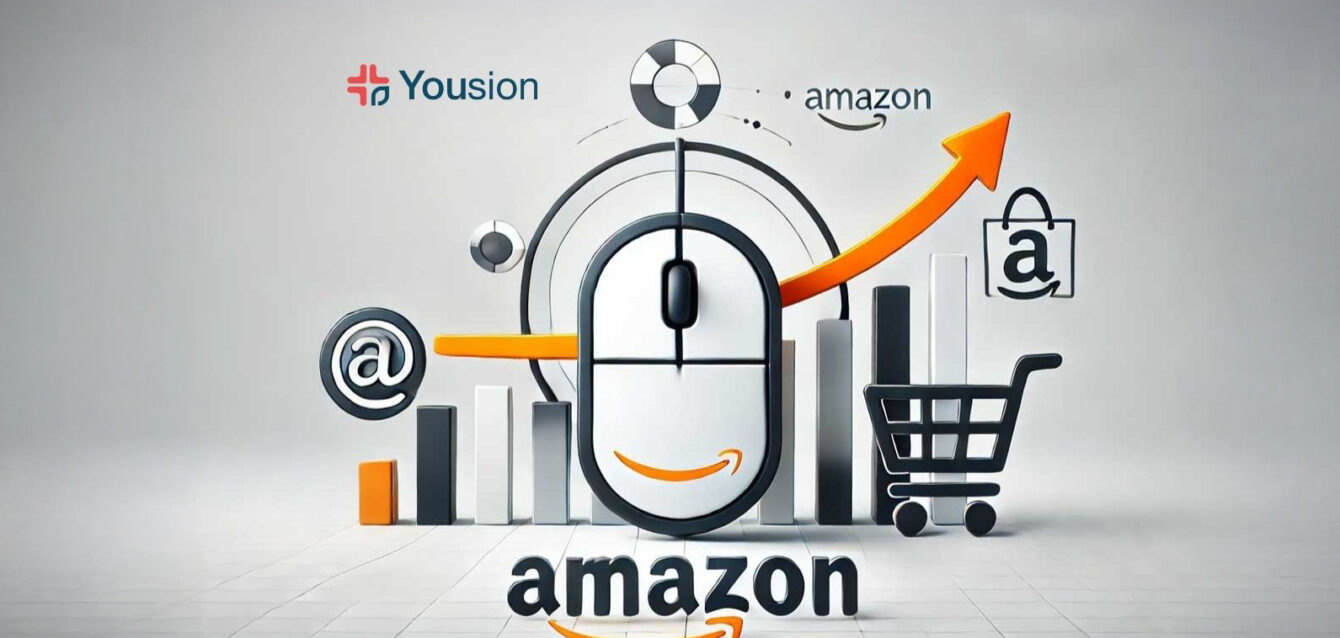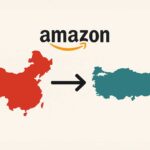Selling on Amazon is becoming more competitive every day. To increase sales, reach the right audience, and stand out, Amazon Advertising (PPC) is one of the most effective tools. However, to run a successful campaign, you need a solid understanding of Amazon’s ad types, bidding system, and optimization strategies.
In this guide, we’ll break down how Amazon Ads work, the different types of ads, key steps to creating a winning campaign, and the best optimization techniques. Learn everything you need to know to manage ads effectively and boost your success on Amazon.
What is Amazon PPC?
Amazon Pay-Per-Click (PPC) advertising allows sellers to promote their products using targeted keywords or audience segments. Here’s how it works:
- Auction-Based Bidding: Advertisers bid on specific keywords or targeting criteria.
- Pay-Per-Click: You only pay when a shopper clicks on your ad.
- Algorithm Ranking: Amazon ranks ads based on relevance, bid amount, and conversion rates.
When managed strategically, Amazon PPC can increase sales, improve brand visibility, and enhance organic rankings. To maximize results, focus on budget management, keyword optimization, and ongoing performance analysis.
How Does Amazon PPC Work?
Amazon PPC is an auction-based advertising system where sellers bid on keywords or targeting options. An ad’s visibility depends on factors like bid amount and relevance.
Amazon’s algorithm analyzes customer searches and shopping behavior to display the most relevant ads. Ad ranking is influenced by:
- Bid Amount: The maximum amount an advertiser is willing to pay per click. Higher bids increase the chances of better ad placement.
- Ad Relevance: How well the product matches the selected keywords and audience. Well-optimized listings improve ranking.
- Conversion Rate: The percentage of clicks that turn into sales. Amazon prioritizes ads with higher conversion rates.
Amazon PPC campaigns can be managed manually or automatically, depending on your goals. To maximize results, sellers should regularly optimize bids, track keyword performance, and use negative keywords effectively.
Types of Amazon Ads
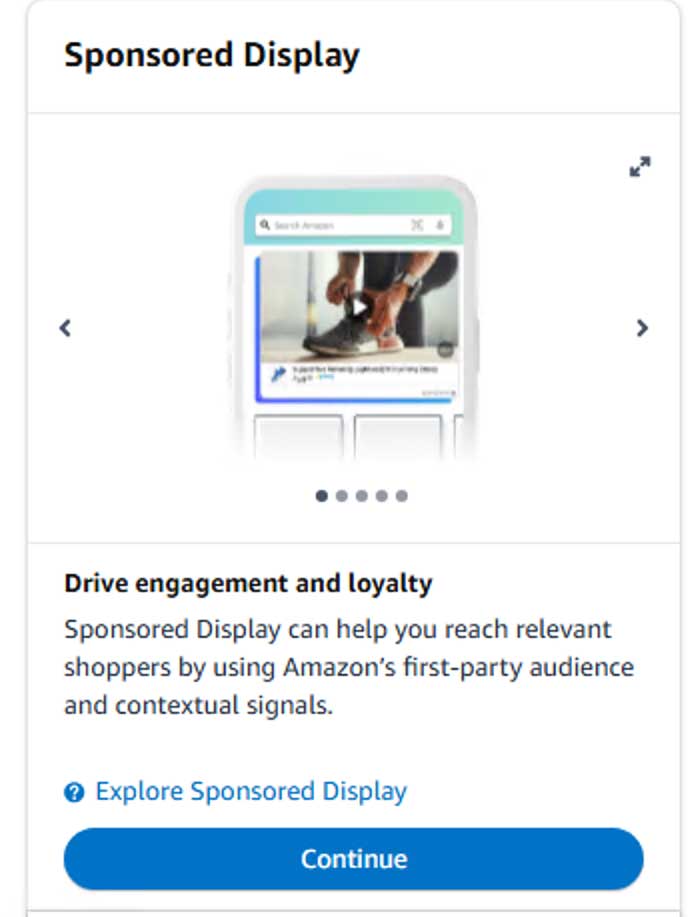
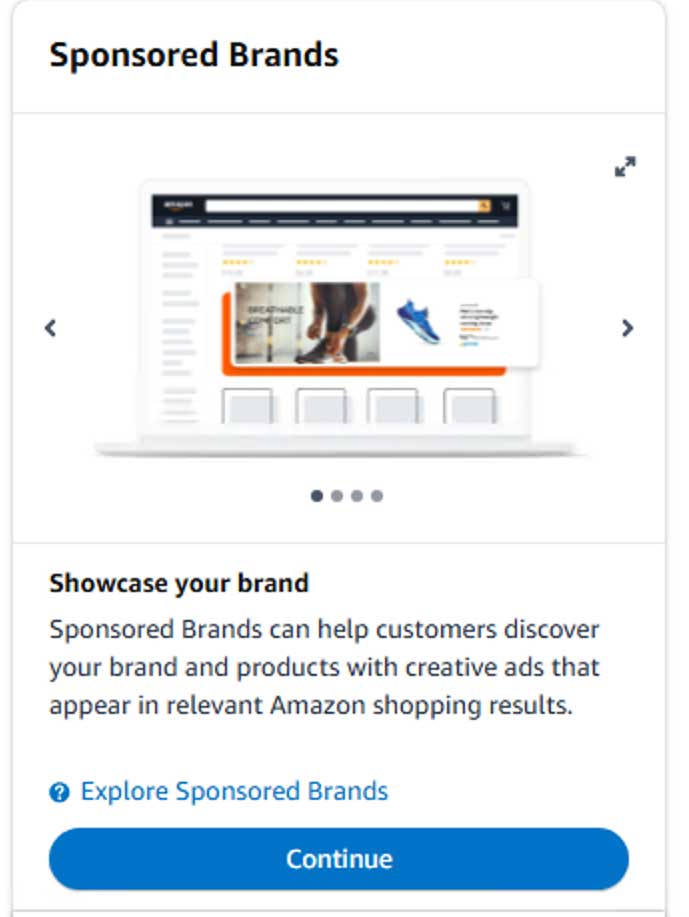
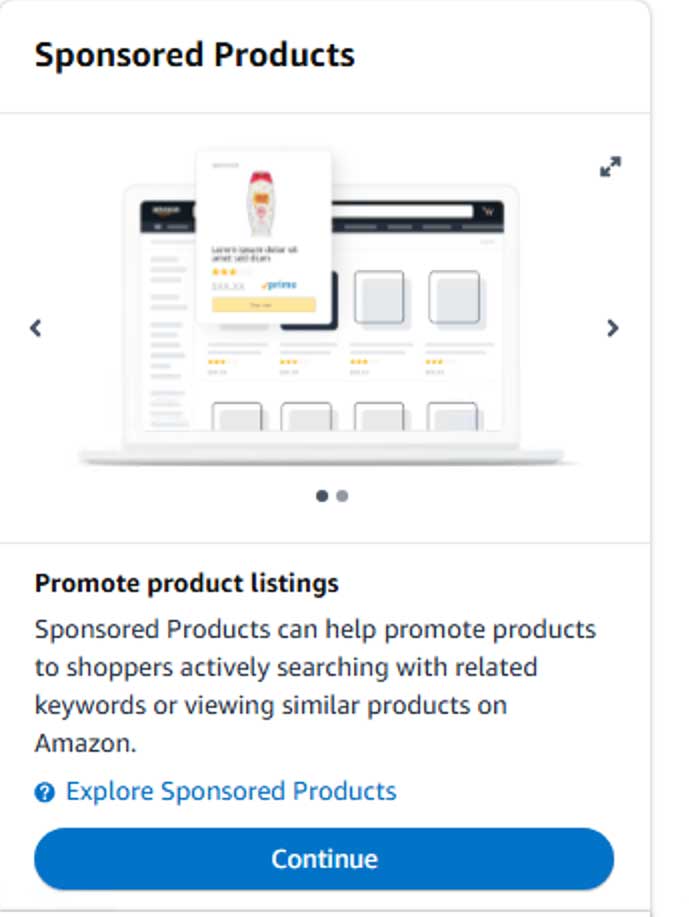
Amazon offers various ad formats tailored to different marketing goals and strategies. Choosing the right ad type helps optimize your budget and drive more sales. There are three main types of Amazon ads:
1. Sponsored Products
Sponsored Products appear in Amazon search results and on product detail pages, targeting specific keywords or products. This ad type is ideal for increasing product visibility and boosting sales.
- Placement: Can appear at the top and bottom of search results, as well as on competitor product pages.
- Targeting: Can be manual (keyword-based) or automatic (Amazon selects relevant terms).
- Best for: New product launches and sellers looking to increase conversions.
2. Sponsored Brands
Sponsored Brands promote multiple products and enhance brand awareness. These ads drive traffic to a brand’s storefront or a custom landing page.
- Placement: Displays as a horizontal banner at the top of search results on desktop and mobile.
- Brand Visibility: Helps brands compete for branded keywords and strengthen recognition.
- Features: Includes a brand logo, custom headline, and at least three products.
3. Sponsored Display
Sponsored Display uses retargeting to reach shoppers both on and off Amazon. These ads target users who have viewed specific products or shown interest in similar items, increasing conversion rates.
- Placement: Appears on Amazon, third-party websites, and mobile apps.
- Targeting: Can be product-based or audience-based (interest targeting).
- Best for: Re-engaging potential buyers and improving customer acquisition.
4. Amazon DSP & Other Ad Formats
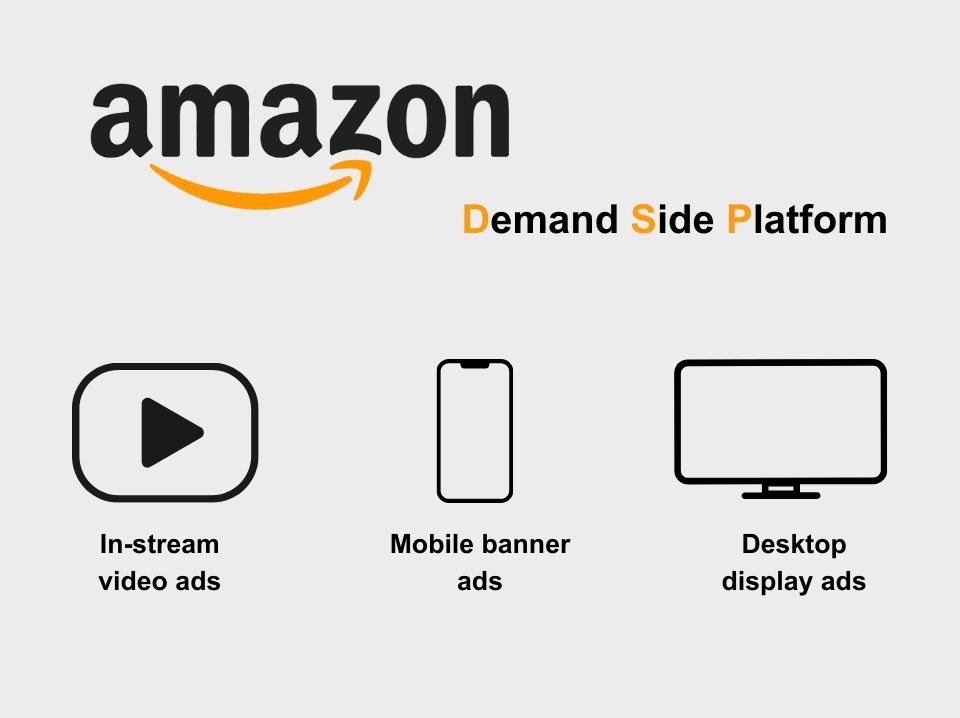
Beyond traditional PPC ads, Amazon’s Demand-Side Platform (DSP) and newer formats like Sponsored Video offer advanced advertising options. These solutions extend reach beyond Amazon and help build data-driven campaigns.
Amazon DSP (Demand-Side Platform)
- Placement: Runs programmatic ads across Amazon-owned properties and external websites, apps, and video platforms.
- Advantages: Provides detailed audience targeting, broader reach, and in-depth performance analytics.
Sponsored Video & Emerging Formats
- Features: Engaging, visually dynamic ads that showcase a product’s story effectively.
- Advantages: Video content boosts customer engagement and plays a key role in purchase decisions.
Choosing the Right Amazon Ad Type
The best ad type depends on your business goals:
- Sponsored Products → For driving immediate sales
- Sponsored Brands → For increasing brand awareness
- Sponsored Display → For retargeting and customer acquisition
A successful Amazon advertising strategy combines these ad types strategically to maximize reach and performance.
How to Create an Amazon PPC Campaign?

A successful Amazon PPC campaign requires careful planning and strategy. Follow these steps to optimize your budget and drive more sales.
- Choose the Right Campaign Type
Select the ad type that best fits your goals:
- Sponsored Products → Best for increasing product visibility and driving sales.
- Sponsored Brands → Ideal for boosting brand awareness and directing traffic to your store.
- Sponsored Display → Effective for retargeting shoppers and expanding audience reach.
- Set Your Budget and Campaign Duration
Decide on a daily or total campaign budget to control spending. Start with a smaller budget to test and identify high-performing keywords.
- Select a Targeting Strategy
Amazon PPC offers two targeting options:
- Automatic Targeting: Amazon selects relevant keywords and placements. Great for beginners and broad audience reach.
- Manual Targeting: You choose specific keywords for greater control and better optimization.
- Choose the Right Bidding Strategy
Amazon Ads use a bidding system, so selecting the right approach is key:
- Fixed Bids: Your bid stays the same in all auctions.
- Dynamic Bids – Down Only: Amazon lowers your bid when a conversion is less likely.
- Dynamic Bids – Up and Down: Amazon increases your bid when a conversion is likely and decreases it when it’s not.
- Launch and Optimize Your Campaign
Once your ad is set up, choose engaging creatives and ad copy to maximize effectiveness. After launching, regularly monitor and optimize your campaign to improve performance and ROI.
Optimizing Amazon PPC Campaigns & Advanced Strategies

To maximize the success of your Amazon PPC campaigns, basic setup isn’t enough. Continuous data analysis, optimization, and strategic adjustments are key to improving performance. Here are essential strategies to refine your campaigns.
- Track Key Performance Metrics
Regularly monitoring campaign metrics helps measure success and make data-driven improvements.
- ACOS (Advertising Cost of Sales): Shows the percentage of ad spend relative to sales. A lower ACOS means higher profitability.
- CTR (Click-Through Rate): Measures how often shoppers click on your ad. A high CTR indicates strong engagement, while a low CTR suggests optimization is needed.
- Conversion Rate: The percentage of ad clicks that turn into sales. A higher conversion rate means your ads are effectively driving purchases.
- Use Negative Keywords to Reduce Wasted Spend
Negative keywords help prevent your ads from showing for irrelevant or low-converting searches, ensuring your budget is spent efficiently.
- Why It Matters: Blocks unprofitable clicks that don’t lead to sales.
- How to Use: Regularly analyze campaign data to find underperforming keywords and add them to your negative keyword list.
- Leverage Automation & AI for Smarter Campaigns
Using automation tools and AI-driven strategies can improve efficiency and reduce manual workload.
- Automation Tools: Platforms like Helium 10 and Jungle Scout help track performance, adjust bids, and optimize campaigns in real time.
- AI-Powered Optimization: AI analyzes shopping behavior and adjusts bids, targeting, and placements dynamically for better results.
- Implement Advanced Budgeting & Bidding Strategies
- Segmentation: Allocate budget based on device (mobile/desktop), location, and audience segments for better targeting.
- Seasonal Adjustments: Increase ad spend during peak shopping periods (holidays, Prime Day) to maximize sales opportunities.
- Manage Risks & Avoid Costly Mistakes
- Click Fraud Protection: Use fraud detection tools to prevent fake clicks from wasting your budget.
- Error Prevention: Regularly review reports, adjust bids, and monitor campaign performance to minimize mistakes.
- Monitor Competitors & Market Trends
- Competitor Analysis: Track their keywords, ad creatives, and bidding strategies to stay competitive.
- Market Trends: Keep up with Amazon’s algorithm changes and industry trends to adjust your strategy accordingly.
To scale your business on Amazon, continuously optimize your campaigns, refine your strategy, and leverage data-driven insights for long-term success.
Best Practices for a Successful Amazon PPC Strategy

Running Amazon PPC campaigns requires more than just setting up ads. To maximize results, you need a well-planned advertising strategy and ongoing optimization. Here are the best practices to improve your campaign performance and increase sales.
Conduct Effective Keyword Research
Choosing the right keywords is essential for driving traffic and conversions. Focus on the terms your target audience is searching for.
Ways to find high-performing keywords:
- Amazon Search Bar Suggestions: Use Amazon’s autocomplete to identify popular search terms.
- Competitor Analysis: Check which keywords top competitors are targeting.
- Keyword Tools: Use tools like Helium 10, Jungle Scout, and Amazon’s Search Terms Report to discover relevant keywords.
Optimize Your Product Listings for Better Conversions
A well-optimized product detail page improves both PPC performance and organic rankings. Even with strong ads, a poorly optimized listing can hurt conversions.
Key elements to optimize:
- Product Title: Clear, keyword-rich, and descriptive.
- Bullet Points & Descriptions: Highlight product features and benefits.
- High-Quality Images & Videos: Use professional visuals with multiple angles and lifestyle shots.
- A+ Content: If your brand is registered with Amazon Brand Registry, use A+ Content to create more engaging product pages.
Use High-Quality Images & A+ Content
Shoppers rely on visuals when making purchasing decisions. High-quality images can increase click-through rates (CTR) and conversions.
Best practices for product images:
- Use high-resolution images with a white background.
- Show the product from multiple angles.
- Include lifestyle images that demonstrate real-world use.
A+ Content helps make your product listing more engaging and informative, improving the shopping experience and boosting sales.
A/B Test Your Ads for Better Performance
A/B testing allows you to compare different ad variations and find what works best. Test different elements to improve click-through rate (CTR) and conversion rate (CVR).
Key elements to test:
- Ad Headlines: Try different keyword variations to see which gets more clicks.
- Product Images: Compare different visuals to find the most engaging option.
- Bidding Strategies: Test different bid types to optimize advertising cost of sales (ACOS) and maximize ROI.
Analyze Competitor Strategies
Understanding your competition is key to improving your Amazon PPC campaigns. Identify what top competitors are doing and adjust your strategy accordingly.
What to analyze:
- Keywords: Which search terms are they bidding on?
- Ad Creatives: How do they structure their ad copy and images?
- Pricing & Promotions: What discounts or deals are they offering?
By learning from competitors, you can improve your strategy and gain a competitive edge.
Stay Updated on Amazon’s Advertising Policies
Amazon regularly updates its advertising policies and algorithm, which can impact your campaigns. Stay informed and adapt quickly to maintain ad performance and avoid unnecessary issues.
A successful Amazon PPC strategy requires continuous monitoring, optimization, and strategic adjustments. By conducting strong keyword research, optimizing product listings, and analyzing competitors, you can improve your ad performance and increase sales.
For long-term success, integrate Amazon SEO with your PPC strategy to boost both paid and organic visibility. For more details and actionable strategies, check out our Amazon SEO Guide.
Common Mistakes to Avoid in Amazon PPC Campaigns
Amazon PPC can significantly boost sales when managed correctly, but common mistakes can lead to wasted ad spend and poor performance. Here’s what to avoid and how to fix it.
- Bidding Too High or Too Low
Amazon PPC works on a bidding system, so setting the right bid strategy is crucial. Overbidding wastes budget, while underbidding reduces visibility.
How to Fix It:
- Adjust bids based on keyword performance—increase bids for high-converting keywords and lower bids for low-performing ones.
- Use dynamic bidding (“Raise and Lower Bids Based on Conversions”) to optimize costs automatically.
- Ignoring Campaign Metrics
Not tracking key metrics like ACOS (Advertising Cost of Sales), CTR (Click-Through Rate), and Conversion Rate can lead to inefficient spending and low profitability.
How to Fix It:
- Monitor weekly and monthly reports to track ad performance.
- Pause or adjust low-performing keywords and ads to improve ROI.
- Use Amazon’s Advertising Reports to identify high-performing keywords and allocate budget accordingly.
- Not Using Negative Keywords
Without negative keywords, your ads may appear for irrelevant searches, leading to unnecessary clicks and wasted budget.
How to Fix It:
- Regularly analyze search term reports and add low-converting keywords as negative keywords.
- Use phrase match or exact match instead of broad match to improve targeting accuracy.
- Setting an Unrealistic Budget
A budget that’s too low limits reach, while an oversized budget can lead to unnecessary spending.
How to Fix It:
- Start with small test budgets, analyze performance, and scale successful campaigns.
- Keep ACOS under control to manage costs effectively and maximize ROI.
Avoiding these common Amazon PPC mistakes will help you optimize ad spend, improve performance, and increase sales. Regular campaign monitoring, bid adjustments, and keyword optimization are key to long-term success.
Why Are Amazon Ads Important?
While organic rankings and customer reviews matter, Amazon PPC advertising is now essential due to increasing competition. With the right ad strategy, sellers can improve visibility, drive sales, and achieve long-term growth.
- Boosts Product Visibility & Sales
With millions of products on Amazon, ranking high organically takes time. Amazon PPC provides immediate visibility and faster sales.
How Amazon ads help sales:
- Targeted PPC campaigns drive higher conversions.
- Ads can boost organic rankings—products with strong sales perform better in Amazon’s algorithm.
- For new product launches, PPC helps generate early sales momentum.
- Gives a Competitive Advantage
Amazon is highly competitive, and sellers using PPC ads gain an edge over those who don’t.
How to stay ahead:
- Analyze competitor ads and keywords to refine your strategy.
- Use a mix of Sponsored Products, Sponsored Brands, and Sponsored Display Ads to maximize exposure.
- Optimize bids and strategies for competitive keywords.
- Improves Amazon Ranking Performance
Amazon’s A9 algorithm ranks products based on sales history, conversion rates, and engagement. PPC campaigns improve these metrics, leading to better organic rankings.
How ads improve rankings:
- Higher click-through and conversion rates signal relevance to Amazon’s algorithm.
- Increased sales from PPC can lead to better long-term organic placement.
- Targeted ads help reach specific audiences and increase repeat purchases.
Why Is PPC Important for Amazon Sellers in 2025?
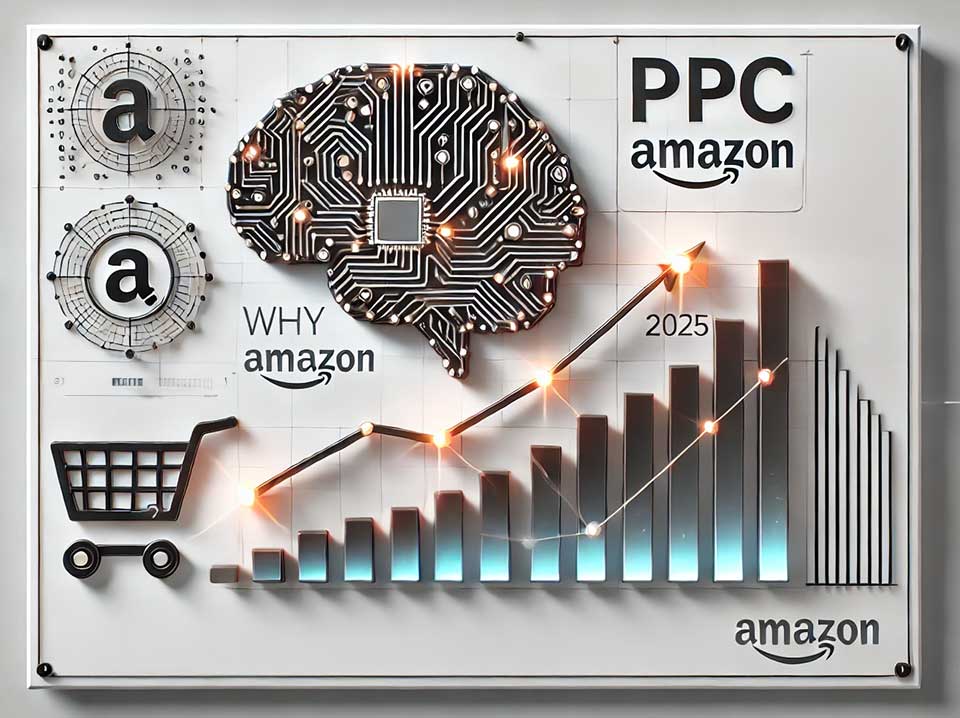
As competition on Amazon grows, relying on organic rankings alone is no longer enough. In 2025, Pay-Per-Click (PPC) advertising is not just a way to increase sales—it is a critical strategy for long-term success. With advancements in AI-driven search technology and Amazon’s evolving algorithms, sellers must optimize their PPC strategies to stay competitive.
1. Boosts Product Visibility & Sales
With millions of products on Amazon, standing out is more challenging than ever. PPC ads ensure that your products appear in front of the right customers instantly.
- Faster product launches: PPC helps new products gain visibility and sales quickly.
- Keyword optimization: Well-targeted ads improve search rankings and increase conversions.
2. Helps You Stay Ahead of Competitors
Having a great product listing is not enough—competitors are running aggressive PPC campaigns to attract customers.
- Target competitor audiences: Place ads on competitor product pages to reach their customers.
- Optimize bids & strategy: Use dynamic bidding to adjust for high-competition keywords.
3. Improves Organic Ranking on Amazon
Amazon’s A10 algorithm ranks products based on sales history, conversion rates, and customer engagement. PPC campaigns can directly improve these metrics.
- More clicks and conversions boost organic ranking.
- Higher PPC-driven sales improve long-term placement in search results.
- Targeted advertising increases repeat purchases and customer engagement.
4. AI-Powered Search & Personalized Recommendations
By 2025, AI technology is shaping Amazon’s search and recommendation systems.
- Personalized search results: AI adjusts search rankings based on customer behavior, making PPC targeting even more important.
- Voice & visual search: As shoppers use voice assistants and image search, PPC must adapt to optimize visual and voice-friendly listings.
5. Amazon’s Algorithm Updates & Future Trends
Amazon continues to refine its ranking system, integrating machine learning and real-time data analysis to improve ad performance.
- AI-powered rankings: Organic and paid rankings are becoming more connected.
- Real-time data analysis: Amazon’s system helps sellers adjust PPC campaigns instantly based on trends.
- Competitive insights: Advanced analytics provide better keyword and bidding strategies.
In 2025, Amazon PPC is essential for long-term success. To stay ahead, sellers need to:
- Maximize visibility with strategic PPC campaigns.
- Outperform competitors with precise ad targeting.
- Leverage AI-driven insights for better decision-making.
Managing Amazon PPC campaigns effectively is key to sustained growth and profitability. If you want to optimize your ads, improve your ROI, and scale your sales, Yousion is here to help.
Contact us today to let our experts manage your Amazon PPC campaigns and grow your business!
Amazon PPC FAQ: Frequently Asked Questions
Amazon Pay-Per-Click (PPC) is an advertising model where sellers bid on keywords to display their products in search results and product detail pages. Advertisers only pay when a shopper clicks on their ad.
Amazon offers three main ad types:
- Sponsored Products: Promote individual products in search results and product pages.
- Sponsored Brands: Feature a brand logo and multiple products, driving traffic to a store page.
- Sponsored Display: Retarget shoppers on and off Amazon.
Amazon PPC operates on an auction-based bidding system:
- Sellers bid on keywords or audience segments.
- Ads appear based on bid amount, relevance, and conversion rates.
- Advertisers pay per click, not per impression.
Amazon PPC costs vary based on:
- Bid competition (high-demand keywords cost more).
- Industry & product category.
- Campaign optimization & targeting settings.
Average Cost-Per-Click (CPC) can range from $0.20 to over $5, depending on competition.
Advertising Cost of Sales (ACOS) is calculated as:
ACOS = (Ad Spend ÷ Ad Revenue) × 100
- Low ACOS (<20%) → High profitability, but may limit reach.
- Balanced ACOS (20-40%) → Good mix of profit and visibility.
- High ACOS (>40%) → Aggressive growth strategy, may reduce profit margins.
- Use negative keywords to eliminate wasteful clicks.
- Optimize product listings for better conversions.
- Adjust bids based on keyword performance.
- Test manual vs. automatic campaigns.
- Automatic campaigns → Amazon selects keywords, great for beginners & keyword discovery.
- Manual campaigns → You control bids & keywords, ideal for experienced sellers optimizing ad spend.
Best practice: Start with automatic targeting, analyze performance, and transition high-performing keywords to manual campaigns.
Amazon PPC results depend on competition and optimization but typically:
- First few days → Data collection & campaign learning.
- First 1-2 weeks → Identify high-performing keywords & adjust bids.
- First 30-60 days → Consistent optimization improves conversions.
Yes! Amazon’s A10 algorithm prioritizes products with strong sales velocity & conversion rates. PPC campaigns increase sales, which helps boost organic rankings over time.
- Track key metrics (ACOS, CTR, conversion rate).
- Refine keywords (add negative keywords & optimize bids).
- A/B test ad creatives (titles, images, descriptions).
- Monitor competitors & adjust strategies.
Yes! Start small and scale up by:
- Setting low daily budgets ($5–$20/day).
- Bidding on low-competition, high-conversion keywords.
- Using exact & phrase match targeting instead of broad match.
- CPC (Cost-Per-Click): The amount you pay for each ad click.
- ACOS (Advertising Cost of Sales): The percentage of revenue spent on ads.
Success depends on your goals:
- High ROAS (Return on Ad Spend) = More sales for less ad spend.
- Low ACOS = Higher profit margins.
- High CTR & Conversion Rate = Better ad engagement & sales.
Yes! You can run Sponsored Products and Sponsored Display Ads without Brand Registry. However, Sponsored Brands & A+ Content require Brand Registry.
- Use Sponsored Display Ads to appear on competitor pages.
- Bid on competitor brand names & product-related keywords.
- Offer better deals, reviews, and images to attract buyers.
Instead of pausing completely:
- Lower bids for low-performing keywords.
- Analyze search term reports and add negative keywords.
- Improve product listings (better titles, images, and descriptions).
- Amazon PPC → Targets high-intent shoppers ready to buy.
- Google Ads → Targets broader audiences, including informational searches.
Amazon PPC generally has a higher conversion rate than Google Ads since shoppers are closer to making a purchase.
- Helium 10 & Jungle Scout → Keyword research & tracking.
- Amazon Advertising Console → Built-in Amazon ad management.
- Perpetua & Quartile → AI-driven bid & campaign automation.
Check performance weekly, but avoid constant changes that prevent learning. Ideal schedule:
- Daily → Monitor major spend fluctuations.
- Weekly → Adjust bids & add negative keywords.
- Monthly → Analyze trends & restructure campaigns if needed.


